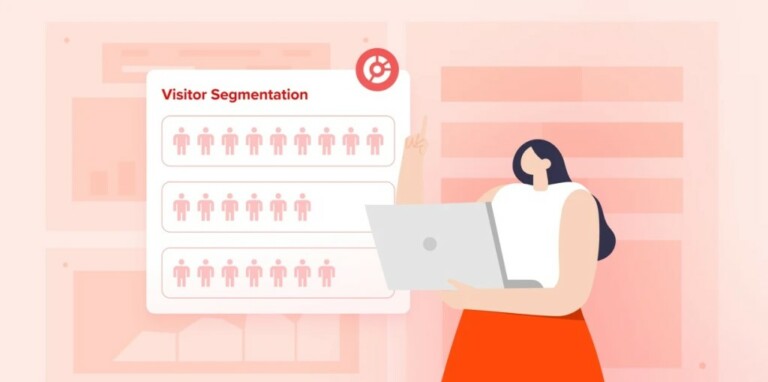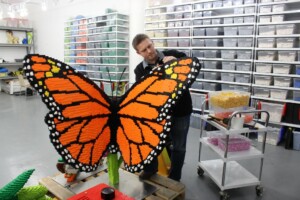ROLLER, the ticketing, CRM and POS specialist, has shared its insights into visitor segmentation for theme parks and attractions and takes a detailed look at approaches, applications, and best practices for this strategic process.
Visitor segmentation is based on the separation of a set of clients into categories according to particular attributes. These categories can be organised according to demographics (age, family status), behaviour (ride preferences, spending patterns), and personal preferences (favourite themes or types of attractions).
However, segmentation is much more than just a classification structure. It’s a valuable, strategic tool for owners and operators of attraction venues to better understand the varied needs and expectations of their visitors.
“Obviously, not all of your guests are the same,” explains the firm. “Still, many owners and operators forget this when considering updates to your venue or a new marketing strategy. Different visitors have unique needs, desires, and expectations. By segmenting them into distinct groups, attraction venues can tailor their offerings and communications to effectively resonate with each segment.”
Benefits of visitor segmentation
Visitor segmentation offers significant strategic advantages and supports activities including:
- The development of tailored experiences. By leveraging visitor segmentation, attractions can better understand the preferences of different categories of guests. This means that they can develop experiences to meet their specific needs and expectations, such as events for families, or rides for thrill seekers. Segmentation helps to create an unforgettable visit and increases guest satisfaction, so visitors are more likely to return and share positive word-of-mouth.
- Increasing the effectiveness of communications. “Knowing your visitors’ identities helps you craft more effective marketing and communication strategies,” ROLLER says. “Messages that resonate with a teenager might not impact a senior visitor in the same way. Segment-specific marketing enables parks to communicate the right message to the right audience, increasing engagement and interest.”
- Data-driven decision making. Segmentation enables operators to understand guests’ preferences and potential visit patterns, and so can help to improve their planning. Insights might range from staffing and visitor flow management to planning for park expansions and partnership projects.
Types of segmentation
Choosing the most appropriate kind of visitor segmentation model is key to this strategic process. ROLLER explains: “Understanding the different types of visitor segmentation is crucial for theme parks to effectively cater to their diverse audience. Each type of segmentation offers unique insights that can drive more personalized experiences, targeted marketing strategies, and informed operational decisions.”
Demographic segmentation groups visitors by age, gender, income and family status, and can inform the kinds of rides offered, merchandise, or price points that are made available at an attraction, for example. Geographic segmentation is based on where visitors have travelled from and can help operators shape targeted promotions, language services, park hours and more.
Play Boutique in Oregon, for example, offers an experience which caters to both the children enjoying its play areas and their parents. It has created comfortable lounge areas and a cafe where parents can relax or work while their children play.
Meanwhile, behavioural segmentation looks at factors such as visit frequency, spending patterns, and ride preferences. This can be useful in guiding investment decisions, developing loyalty offers and designing maintenance programmes, among many other applications.
Psychographic segmentation considers lifestyle, values, and interests. Lifestyle factors may identify opportunities for premier experiences or wellness offerings, values-based insights could help an attraction to align its themes to the values of a visitor category, and interest segmentation enables the development of experiences for particular hobbies or themes.
For example, Universal Orlando sells passes which enable guests to avoid the regular queues. These premium products provide an additional level of service for visitors who value their time highly.
Segmentation & marketing
“Visitor segmentation offers valuable insights for theme parks and attraction venues, enabling them to tailor their marketing strategies effectively,” ROLLER advises. Attractions can use data from interactions with digital assets to improve their understanding of visitor preferences. Tools such as heat maps and click-through rates can offer useful insights.
Pay-per-click and search engine marketing can also offer insights into visitor preferences. Attractions can use engagement rates to better understand what messages resonate with visitors, for example using A/B testing. Online marketing can also help attractions track lead behaviour, understand which marketing channels are performing best, and develop more sophisticated follow-up marketing and engagement strategies.
Furthermore, data from loyalty programmes can help attractions to better understand their visitor segments and predict future behaviour. This could lead to the creation of differentiated experiences, for example, levels of loyalty membership.
“By employing these segmentation strategies, parks can more effectively tailor their marketing efforts, ensuring that they cater to the specific needs and interests of their diverse visitor base,” ROLLER adds. “This not only enhances the visitor experience but also drives operational efficiency and business success.”
The firm suggests that attractions set clear KPI’s, such as increased ticket sales, higher engagement rates, or loyalty program growth, to measure outcomes from segmented marketing campaigns.
Best practices
“Getting the most out of visitor segmentation requires a set of best practices that ensure accuracy, ethical considerations, and practical utility,” says ROLLER. These best practices include:
- Ethical data collection. Data collection policies need to be in line with regulations and ensure visitor privacy.
- Advanced analysis. Attractions are advised to use analytics tools to process and understand their data. “This turns raw data into actionable insights that can inform decisions about park operations, marketing strategies, and visitor experience improvement,” explains the firm.
- Responsive strategies. ROLLER recommends that attractions should: “be prepared to continuously adapt and modify strategies based on the latest data and market trends”.
- Monitoring emerging trends. The firm stresses the importance of being aware of changes in broader market trends and visitor preferences, behaviour and expectations.
- Inviting guest feedback. Customer feedback, such as surveys, feedback forms, and social media interactions, can be used by attractions to refine segmentation strategies and make improvements to the venue.
- Encourage inter-departmental collaboration. “All the data in the world won’t help if your departments aren’t working toward common goals. Encourage collaboration between marketing, operations, and customer service to ensure a cohesive approach to using visitor segmentation insights,” suggests the firm.
ROLLER concludes: “Lumping your customers into the same bucket can be a huge mistake for attraction venue owners. Your guests come from different walks of life and have their own sets of habits and beliefs that they adhere to. As such, realizing these differences and accommodating them as soon as possible can help your venue provide exceptional, personalized experiences to guests and thrive in a competitive industry.”
Recently, ROLLER launched an innovative new feature, Mobile Food & Beverage Ordering. This enables visitors to place an order at their table using a QR code. The development of the new feature was driven by ROLLER’s comprehensive understanding of the evolving standards for online and self-service experiences.

















